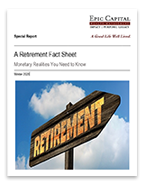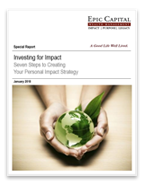Cash Balance Plans
May 27, 2020
In corporate America, pension plans are fading away. Only 16% of Fortune 500 companies offered them to full-time employees in 2018, according to Willis Towers Watson research. In contrast, legal, medical, accounting, and engineering firms are keeping the spirit of the traditional pension plan alive by adopting cash balance plans.1
Owners and partners of these highly profitable businesses sometimes get a late start on retirement planning. Cash balance plans give them a chance to catch up. These defined benefit plans are age-weighted: the older you are, the more you can potentially sock away each year for retirement. In 2019, a 45-year-old can defer as much as $168,000 annually into a cash balance plan; a 55-year-old, as much as $255,000.2
These plans are not for every business as they demand consistent contributions from the plan sponsor. Even so, they offer significantly greater funding flexibility and employee benefits compared to a standard defined contribution plan, such as a 401(k).2
How does a cash balance plan differ from a traditional pension plan? In a cash balance plan, a business or professional practice maintains an account for each employee with a hypothetical “balance” of pay credits (i.e., employer contributions) plus interest credits. The plan’s objective is to pay out a pension-style monthly income stream to the participant at retirement – either a set dollar amount or a percentage of compensation. Lump-sum payouts are also an option.3
Each year, a plan participant receives a pay credit, typically equaling 5-6% of his or her compensation, augmented by an interest credit. (The interest credit can sometimes be linked to Treasury yields or corporate bond yields.)2,4
As an example of how credits are accrued, let’s say an attorney named Jessica Hutchinson earns $175,000 annually at the XYZ Group. She participates in a cash balance plan that provides a 5% annual salary credit and a 5% annual interest credit once there is a balance. Jessica’s first-year pay credit would be $8,750 with no interest credit as there was no balance in her hypothetical account at the start of her first year of participation. For year two (for convenience, let’s assume no raises), Jessica would get another $8,750 pay credit and an interest credit of $8,750 x .05 = $437.50. So, at the end of two years of plan participation, her hypothetical account would have a balance of $17,937.50.
Cash balance plans are commonly portable: the vested portion of the account balance can be paid out if an employee leaves before a retirement date.5
An employer takes on considerable responsibility with a cash balance plan. The plan document states that annual contributions must be made – either in the form of a percentage of pay or a lump sum. An actuary needs to advise the employer, and help the business determine the yearly contribution needed to appropriately fund the plan. The employer effectively assumes the investment risk, not the employee. For example, if the plan says it will award participants a fixed 5% interest credit each year, and asset performance does not generate that large a credit, the employer may have to contribute more to the plan to fulfill its promise.2,5
Cash balance plans must cover at least 50 employees or 40% of the firm’s workforce, whichever is lesser. They can be used in tandem with 401(k) plans. Cash balance plans typically cost a company between $2,000-5,000 to create and between $2,000-10,000 per year to run. That may seem expensive, but the nature of a cash balance plan offers owners the potential to keep excess profits earned above the annual interest credit owed to employees.6,7
Benefit allocations are based on career average pay, not just “the best years.” In a traditional defined benefit plan, the eventual benefit is based on a 3- to 5-year average of peak employee compensation multiplied by years of service. In a cash balance plan, the benefit is determined using an average of all years of compensation.8
Cash balance plans are less sensitive to interest rates than old-school pension plans. As rates rise and fall, liabilities in a traditional pension plan fluctuate. This opens a door to either overfunding or underfunding (and underfunding is a major risk right now with such low interest rates). By contrast, a cash balance plan has relatively minor variations in liability valuation.8
A cash balance plan cannot be administered with any degree of absentmindedness. It must pass yearly non-discrimination tests; it must be submitted for Internal Revenue Service approval every five years instead of every six. Obviously, a plan document must be drawn up and periodically amended, and there are the usual annual reporting requirements.8
Ideally, a cash balance plan is run by highly compensated employees (HCEs) of a firm who are within their prime earning years. In the ideal scenario for non-discrimination testing, the HCEs are 10-15 years older than half (or more) of the company’s workers.8
If trouble occurs and a company founders, cash balance plan participants have a degree of protection for their balances. Their benefits are insured up to their maximum value by the Pension Benefit Guaranty Corporation (PBGC). If a cash balance plan is terminated, plan participants can receive their balances as a lump sum or request periodic payments.3
Since 2006, the number of cash balance plans has grown by about 20% per year. (The passage of the Pension Protection Act cleared the way for their broad adoption.) Today, some businesses even have dual profit-sharing and cash balance plans. Maybe it is time for your firm to look into this intriguing alternative to the traditional pension plan.2
Tags: Financial Help, Personal Finance, retirement, Retirement Planning
More Insights
You know how important it is to plan for your retirement, but where do you begin? One of your first steps should be to estimate how much income you’ll need to fund your retirement. That’s not as easy as it sounds, because retirement planning is not an exact science. Your specific needs depend on your … Continue reading “Estimating Your Retirement Income Needs”
As June begins, markets continue to navigate a complex landscape shaped by trade policy shifts, an uncertain economic and earnings outlook, and bond market headwinds. Several key developments in recent weeks may have implications for markets:
April showers came a month early as stocks fell in March. Tariffs were the primary cause of the market jitters, although that uncertainty became too much for markets to shrug off once economic data started to weaken.
A successful investor maximizes gain and minimizes loss. Though there can be no guarantee that any investment strategy will be successful and all investing involves risk, including the possible loss of principal, here are six basic principles that may help you invest more successfully.
Losing a spouse is a stressful transition. And the added pressure of having to settle the estate and organize finances can be overwhelming. Fortunately, there are steps you can take to make dealing with these matters less difficult.
Services
Epic Capital provides the following comprehensive financial planning and investment management services: Learn More >


 Top of Page
Top of Page











